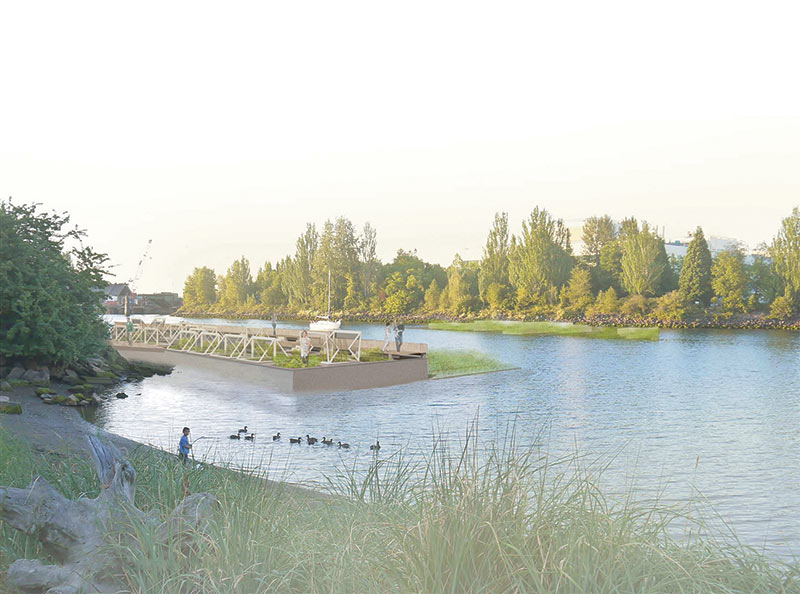
What should be done with the 33 concrete pontoons—each close to 350 feet long and weighing over 9 million pounds—that support the largest floating bridge in the world? That was the question posed by Sarah Strouse, a master of architecture degree candidate at Washington State University. Strouse recently organized an ideas competition to reuse the pontoons of Seattle’s SR 520 Bridge.
Student and professional design teams from more than 18 countries submitted proposals for the bridge, which crosses Lake Washington and connects the city to other municipalities, like Bellevue and Redmond.
|
Site plan and view from the top of the South Park Food Bridge proposal.
|
||
The 1.4-mile-long, 50-year-old span, at risk from damage sustained during several earthquakes and windstorms, will be decommissioned in 2014. It will be replaced with a wider, $4.65 billion floating bridge to better accommodate the more than 110,000 vehicles that cross the lake daily.
Freed from strict feasibility constraints, finalist entries were imaginative, going beyond the traditional adaptive strategies of piers or docks. Instead, entries included linear parks, agricultural strategies, memorial spaces, and transportation alternatives. One group proposed lowering the bridge 5 centimeters below Lake Washington to create the world’s longest submerged pedestrian walkway. Another argued for relocating the pontoons as water taxi stations throughout the greater Seattle area. One recommended a poetic island cemetery; yet another envisioned a public tidal power center housing turbines.
|
Second-prize winner, Spirit Pavilion, by Jon Gentry and Aimee O’Carroll.
|
||||
The winning proposal, “South Park Food Bridge,” from Seattle-based team David Dahl and Nicole Lew, called for relocating the pontoons to the Duwamish River, which feeds into Elliott Bay. The team suggested transforming the pontoons into urban farms and floating wetlands to help mitigate river pollution and bring fresh produce to the South Park community food desert.
“What intrigued us,” Lew said, “was the mystery of the Duwamish as a source of life for the people of Seattle, and we looked for ways to reintroduce habitat and celebrate its history.”